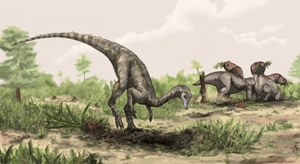
We’re fortunate enough to have flowers in our presence every day, but these beautiful plants didn’t always exist. Science World Report noted that they were believed to have emerged billions of years ago, but there was no certainty as to when – until now. Recently discovered fossils suggest that they actually evolved 100 million years earlier than the initial estimation.
Science World Report explained that the first flowering plants, or angiosperms, were closely related to conifers and seed ferns, and though they no longer exist, their pollen grains left fossil imprints in rocks. Scientists previously thought that these flowers, which were dated back to the early Cretaceous period 140 million years ago, were the first ones to evolve. Then, researchers discovered fossilized pollen grains while examining two drilling cores from northern Switzerland.
A blooming breakthrough
Using confocal laser scanning microscopy, scientists looked at high-resolution images of six different types of pollen. Without this technology, they wouldn’t have been able to examine the microscopic grains and determine precisely what period these plants were from. Now they are estimating that these plants emerged nearly 240 million years ago, when dinosaurs were roaming the earth. The news source also reported that because six different varieties of pollen were unearthed by the researchers, they determined that the plants that existed then were likely very diverse.
While it’s certainly exciting to know that flowers were growing in the middle Jurassic period, these plants were most likely quite different from the blooms we have grown to appreciate. This is because the plants were growing in Switzerland, which had a much drier climate back then. However, Discovery LiveScience noted that these pollen samples were also found in Switzerland and the Barents Sea north of Scandinavia, which were part of the subtropics. This means that the flowering plants could thrive in drastically different environments.

Additionally, the structure of the pollen indicates that the flowers were pollinated by bugs – probably beetles, as LiveScience explained that bees didn’t exist for another 100 million years.
Peter Hochuli, a paleobotanist at the University of Zürich’s Paleontological Institute and Museum and a co-author of the study, commented on the significant role that these beautiful plants have played in our planet’s evolution.
“Flowering plants were the last group of plants appearing in Earth’s history,” he explained to LiveScience. “They are an extremely successful group on which all terrestrial ecosystems today depend, including the existence of humanity … Our findings suggest that the origin of flowering plants is rooted much deeper than originally thought.”
In fact, according to LiveScience, scientists initially hypothesized that flowering plants spread rapidly after they first emerged.
“This sudden appearance has bothered scientists ever since Darwin, who called the origin of flowering plants an ‘abominable mystery,'” Hochuli told the news source.
Questions remain
The Los Angeles Times pointed out that it has been a challenge to date these fragile plants. Though they were resilient enough to leave fossilized impressions, their tiny, delicate grains have been nearly impossible to identify.
“Some finds from the Jurassic announced with much public attention proved to be based on wrong ages and the interpretations of other remains from the Jurassic are controversial,” the authors wrote, according to the news outlet.
While this recent discovery is no doubt promising, the Los Angeles Times revealed that scientists are still uncertain about the origin of flowering plants or what atmospheric conditions or circumstances may have caused their evolution.
“So far, no direct ancestors of flowering plants are known,” Hochuli said, according to the source. “Some groups of plants are suspected to be closely related. But the evidence is weak, and most of these groups are thought to be too specialized to be at the base of the flowering plants.”
Source: Teleflora – Fossils Shows Flowers May have Bloomed Before the Age of Dinosaurs





